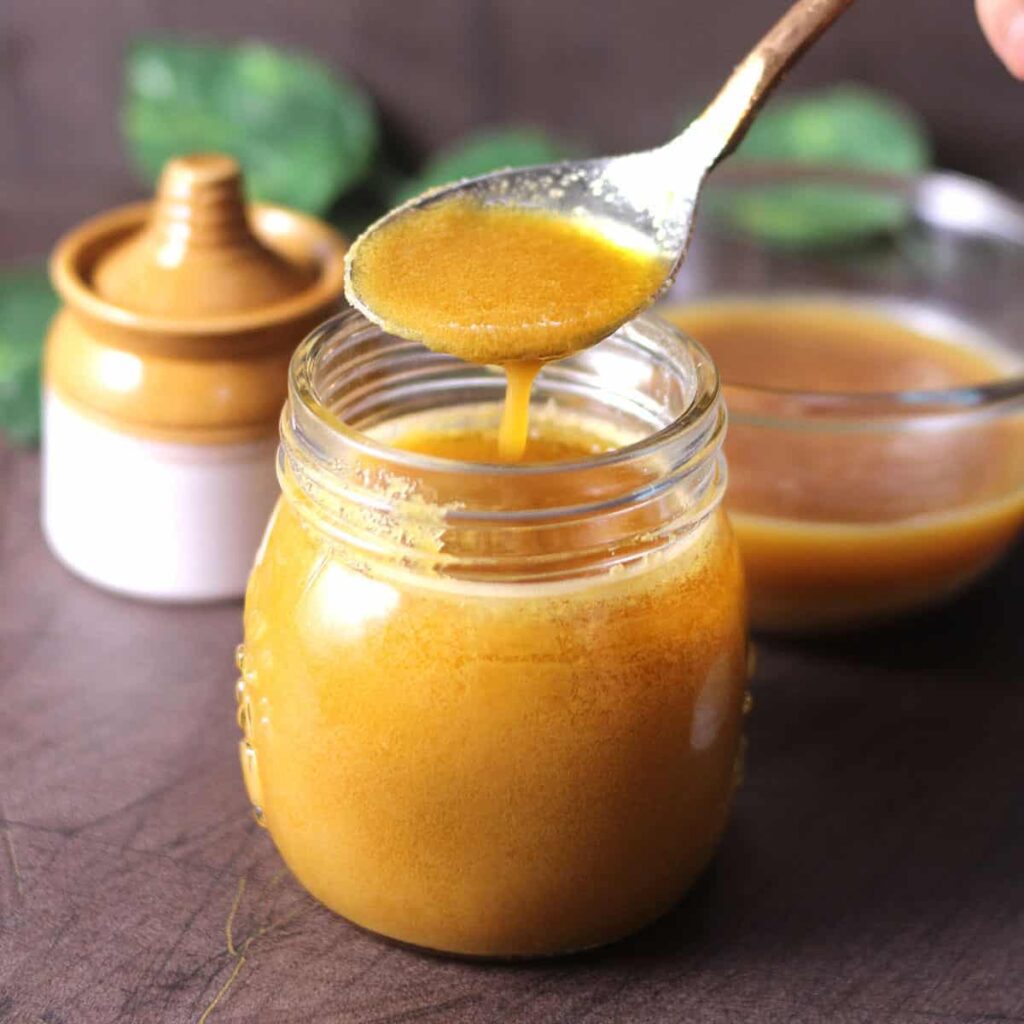Ghee, also known as clarified butter, is an integral part of Indian cuisine and Ayurveda, celebrated for its ability to enhance digestion, boost immunity, and nourish skin and hair. However, the growing issue of adulterated ghee made with harmful substances like vegetable fat and synthetic additives is posing serious health risks.
Recently, a shocking case of adulteration was uncovered in Surat, where officials seized 25 tons of fake “pure ghee.” Here’s everything you need to know about the case, the risks of adulterated ghee, and tips to identify pure ghee.

The Surat Adulterated Ghee Case
The State Monitoring Cell (SMC) recently raided a factory in Masma, GIDC Olpad, Surat, and seized:
- 25 tons of adulterated ghee, packed and ready for distribution.
- 496 boxes of counterfeit cow ghee, valued at ₹23.84 lakh.
- Raw materials (vegetable fat, fatty acid mono, and diglycerides) worth ₹69.67 lakh.
- Machinery, packaging materials, and other equipment, bringing the total seizure value to ₹1.17 crore.
The adulterated ghee was sold under brand names such as Shubh Cow Ghee, Labh Cow Ghee, Oreo Cow Ghee, and Savro Cow Ghee, with empty boxes labeled as Dharti, Radhe, and Krishna also found during the raid. These products were distributed across Maharashtra and Rajasthan.
Samples of the adulterated ghee and raw materials have been sent for forensic examination.
The Health Risks of Adulterated Ghee
Adulterated ghee, made with vegetable fats and synthetic additives, can cause significant health problems, including:
- Digestive issues such as bloating and discomfort.
- Cardiovascular risks due to harmful trans fats.
- Long-term health complications, including obesity and increased cholesterol levels.
How to Identify Pure Ghee
With the increasing prevalence of adulteration, it’s essential to know how to differentiate pure ghee from fake. Use these tests and criteria:
1. Appearance and Texture
- Pure ghee: Golden in color with a rich, creamy texture. Appears translucent when held against light.
- Adulterated ghee: Pale in color, which may indicate the presence of preservatives or additives.
2. Packaging and Labels
- Always check for certification and compliance labels on the packaging.
- Verify the license number, manufacturing date, and expiry date.
- Avoid brands with incomplete or suspicious labeling.
3. Aroma and Flavor
- Pure ghee has a nutty aroma and a smooth, pleasant flavor.
- A burnt or off smell indicates the presence of additives or water.
Home Tests to Identify Adulterated Ghee
1. Palm Test
Pour frozen ghee on your palm. If it melts instantly, it is pure. If it does not melt, it is likely adulterated.
2. Boil Test
Boil the ghee in a pan. Pure ghee has a high heating point and should not smell burnt. If it produces bubbles, steam, or a burnt smell, it is adulterated. After boiling, refrigerate the ghee in a jar. If layers form, it contains other oils.
3. Water Test
Add a spoon of ghee to a glass of water at room temperature. Pure ghee floats, while adulterated ghee sinks due to the presence of foreign materials.
4. Salt Test
Mix two spoons of ghee with a pinch of hyaluronic acid and a tablespoon of salt. After 20 minutes, check the color. If the ghee turns red, it is adulterated.
5. Iodine Test
Add two drops of iodine solution to ghee. If it turns purple, it indicates the presence of starch, a common adulterant.
Protect Your Health: Buy Genuine Ghee
To avoid consuming harmful adulterated ghee:
- Purchase ghee from trusted brands with proper certifications.
- Perform simple home tests if you suspect adulteration.
- Stay informed about brands involved in adulteration scandals.
Final Thoughts
Ghee is a valuable addition to your diet, but adulterated ghee poses serious health risks. By learning how to identify pure ghee and avoiding suspicious brands, you can safeguard your health and enjoy the numerous benefits of this golden elixir.
